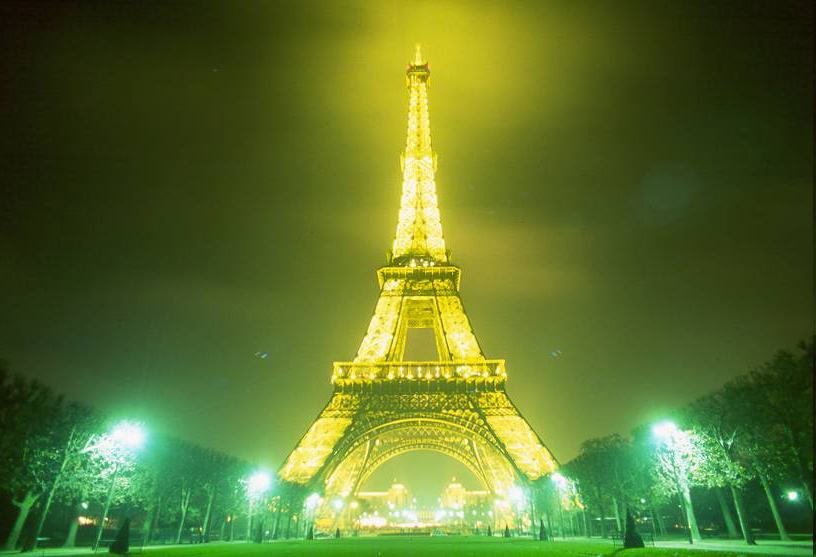 source: www.3dphoto.net/stereo/word/europe/befraluxmon/paris/eiffel_tower_night.jps
source: www.3dphoto.net/stereo/word/europe/befraluxmon/paris/eiffel_tower_night.jps
The Eiffel Tower in Paris, France is built using a bunch of trusses, which you learned about in 'In Straws We Trussed'. But the individual members that make up those trusses are mostly flat strips of iron and steel, and riveted into place. Using truss-like designs, the early modern engineers built structures using a bunch of boxes (see picture). Early beams and girders were basically square pieces of steel, or even wood, fit together at the corners via mortise and tenon, rivet, or weld joints.
As buildings grew higher, and engineers were more worried about controlling costs and reducing material usage, they started playing around with the shape of the beams and girders more. They quickly discovered that by placing a rectangular beam on its short side, they could support more weight than by placing it on its long side. This led them to investigate variations on the theme of orientation of the beam.